


Which Bike Gear For Uphill
Read More : ” How To Adjust Gear Shifter On Bike? “
As a cyclist, conquering uphill terrains is both a test of strength and a rewarding accomplishment. Whether you’re a seasoned rider or a beginner, mastering the art of climbing hills is crucial to becoming a more skilled cyclist.
One of the key factors that can greatly impact your uphill performance is choosing the right bike gear. Using the appropriate gear can help you maintain a steady cadence, conserve energy, and avoid unnecessary strain on your muscles and joints.
In this comprehensive guide, we will delve into the intricacies of selecting the best gear for uphill cycling. We’ll explore the different types of bike gears, gear ratios, and how to effectively shift gears while climbing.
Additionally, we’ll provide valuable tips and techniques to optimize your uphill cycling experience and make those challenging ascents more manageable.
Whether you’re an avid mountain biker, a road cyclist, or a leisure rider, understanding which bike gear is best for uphill conditions will significantly enhance your overall cycling performance and enjoyment.
So, let’s gear up and embark on this enlightening journey to improve your uphill cycling skills.
Exploring the Different Types of Bike Gears
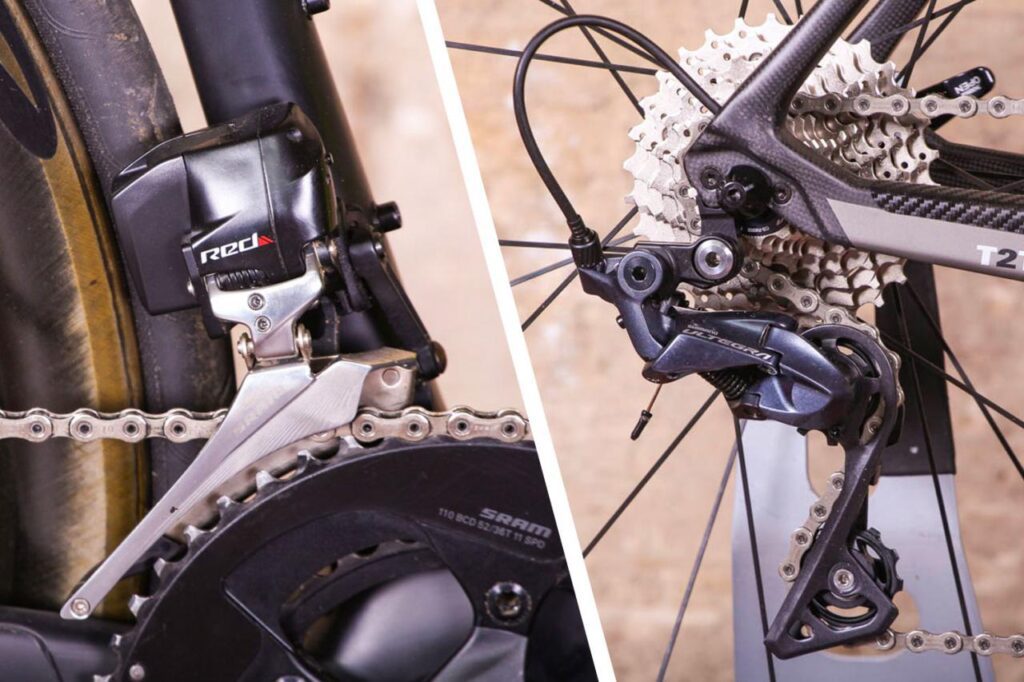


Exploring the Different Types of Bike Gears:
Read More : ” How To Clean A Mountain Bike? “
Bike gears are essential components that allow cyclists to adapt to various terrains and conditions. There are mainly two types of bike gears: internal gears and external gears.
Internal Gears:
Internal gears are enclosed within the hub of the bike’s rear wheel, making them more protected from external elements like dirt and debris.
They are typically found on commuter bikes, city bikes, and some hybrid bikes, providing a clean and low-maintenance gear system.
Internal gears offer a limited range of gears compared to external gears but are well-suited for flat or moderately hilly terrains.
External Gears:
External gears, also known as derailleur gears, are the most common type found on mountain bikes, road bikes, and high-performance bicycles.
They consist of a chainring at the front and a cassette at the rear, and the chain is shifted between different gears using derailleurs.
External gears provide a wide range of gear ratios, allowing cyclists to tackle steep inclines (uphill) and achieve high speeds on flat terrain.
Each type of gear system has its advantages and is suited for different riding styles and terrains.
When considering which bike gear is best for uphill climbs, external gears are typically preferred due to their extensive gear range, enabling riders to conquer challenging ascents with ease.
Choosing the Right Gear Ratio for Uphill Climbs



Choosing the Right Gear Ratio for Uphill Climbs:
Read More : ” Why Are Mountain Bikes So Expensive? “
When facing uphill climbs, selecting the appropriate gear ratio is crucial to maintaining efficiency, conserving energy, and successfully conquering the ascent.
The gear ratio refers to the relationship between the number of teeth on the chainring (attached to the pedal crank) and the number of teeth on the cassette (attached to the rear wheel hub).
Low Gear Ratios:
For steep uphill climbs, a low gear ratio is ideal. This means using a small chainring at the front and a large sprocket at the rear.Low gear ratios provide more mechanical advantage, making it easier to pedal against the resistance of the incline.
Cyclists can maintain a steady cadence (rpm) while applying less force on the pedals, reducing fatigue during prolonged climbs.
High Gear Ratios:
In contrast, high gear ratios, achieved by using a large chainring at the front and a small sprocket at the rear, are suitable for flat terrain or downhill sections.
High gear ratios allow for higher speeds with each pedal stroke, promoting efficient riding on level ground.
Shifting Gears:
Experienced cyclists adjust their gear ratios continuously during an uphill climb, anticipating changes in gradient or terrain.As the slope increases, they shift to lower gears, and as the incline levels out or descends, they shift to higher gears.
Rider Fitness and Terrain:
The choice of gear ratio also depends on the rider’s fitness level and experience. Novices may opt for lower gears to make the climb more manageable, while seasoned riders might prefer to challenge themselves with higher gears.
The terrain’s steepness and length also influence the gear ratio selection. Longer, gentler climbs may allow for slightly higher gears, while shorter, steeper climbs demand lower gears for maximum efficiency.
Ultimately, the key to finding the right gear ratio for uphill climbs is to strike a balance between pedaling comfortably and efficiently, ensuring a smooth ascent while conserving energy for the remainder of the ride.
Experimenting with different gear combinations and understanding one’s own riding preferences will lead to an enjoyable and successful uphill cycling experience.
Effective Gear Shifting Techniques for Uphill Riding
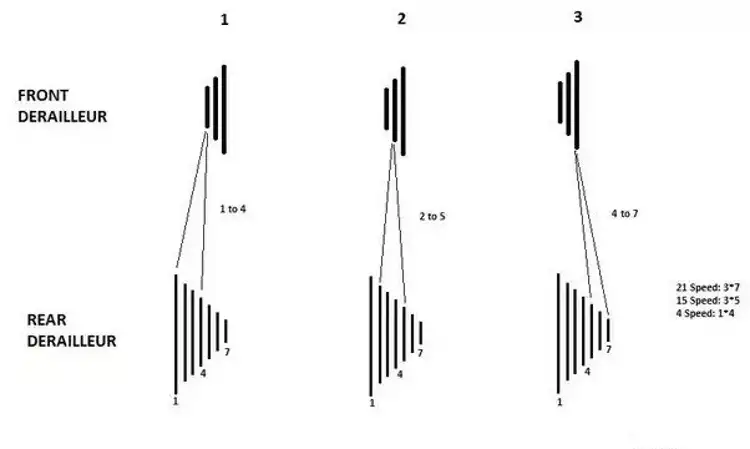


Effective Gear Shifting Techniques for Uphill Riding:
Read More : ” Top Five Electric Bikes “
Uphill riding can be challenging, but with proper gear shifting techniques, cyclists can maintain momentum, conserve energy, and conquer steep climbs more efficiently.
Here are some essential techniques to master:
Anticipate the Terrain:
Look ahead and anticipate changes in the gradient to prepare for gear shifts. Be proactive and adjust gears before reaching the steepest sections.
Start in a Low Gear:
Begin the climb in a low gear to get a smooth start without straining your muscles. This helps you build momentum and find a comfortable cadence.
Maintain a Steady Cadence:
Aim for a consistent pedal cadence (around 70-90 revolutions per minute) to avoid overexertion. Shift gears to maintain this rhythm throughout the climb.
Shift Early and Gradually:
Shift gears before the terrain gets too steep. Gradually transition to higher gears as the slope lessens. Avoid sudden or drastic gear changes that may cause chain slippage.
Use the Rear Derailleur:
On most bikes, the rear derailleur provides more gear options. Utilize it to fine-tune your gear ratios during climbs.
Avoid Cross-Chaining:
Cross-chaining happens when the chain is on the largest chainring at the front and the largest sprocket at the rear, or vice versa.
This puts excessive strain on the chain and drivetrain components. Avoid cross-chaining to extend the lifespan of your bike’s components.
Shift Weight and Stay Relaxed:
While shifting gears, shift your body weight to maintain traction and balance. Stay relaxed on the bike to conserve energy and minimize fatigue.
Stand and Sit Strategically:
When the climb becomes steeper, consider standing on the pedals to generate more power. When the gradient is less steep, sit back down to maintain a comfortable position and pedal efficiently.
Experiment and Practice:
Each uphill climb is unique, so experiment with different gear combinations during training rides. Practice gear shifting techniques regularly to become more proficient.
Remember that gear shifting is a skill that improves with experience. By mastering effective gear shifting techniques for uphill riding, cyclists can tackle challenging climbs with confidence and enjoy a more rewarding and enjoyable cycling experience.
Tips to Conquer Uphill Terrains with Ease



Conquering uphill terrains on a bike can be challenging, but with the right techniques and mindset, it becomes more manageable and enjoyable.
Read More : ” Best Fat Bike Tires For Pavement “
Here are some detailed tips to help you conquer uphill terrains with ease:
Choose the Right Gear Ratio:
Before starting the climb, shift to a lower gear ratio to make pedaling easier. This allows you to maintain a steady cadence and prevents excessive strain on your muscles.
Pace Yourself:
Uphill climbs require endurance. Start at a comfortable pace and avoid pushing too hard at the beginning. Find a rhythm that you can sustain throughout the climb.
Stay Seated (Most of the Time):
Sitting on the saddle reduces the energy required to pedal uphill. Only stand on the pedals when the gradient gets too steep, or when you need to generate more power for a short burst.
Keep Your Upper Body Relaxed:
Tension in your upper body can waste energy and make climbing harder. Keep your grip on the handlebars firm but relaxed, and maintain a steady posture.
Focus on Breathing:
Proper breathing is essential for maintaining stamina during uphill climbs. Take deep breaths and exhale fully to oxygenate your muscles and avoid fatigue.
Look Ahead:
Keep your eyes on the road ahead to anticipate changes in the terrain. This allows you to plan your gear shifts and adjust your approach accordingly.
Climb in a Straight Line:
Try to climb in a straight line rather than zig-zagging. This conserves energy and ensures a smoother ascent.
Engage Your Core Muscles:
Strengthening your core muscles can improve stability and power transfer during uphill climbs. Engage your core to support your upper body and maintain balance.
Shift Gears Smoothly:
Practice shifting gears smoothly and efficiently. Avoid cross-chaining (using extreme gear combinations), as it can strain the drivetrain and lead to premature wear.
Train on Hills:
Regularly include hill training in your rides to build strength and endurance. Gradually increase the intensity and duration of hill climbs as your fitness improves.
Stay Hydrated and Fuel Up:
Proper hydration and nutrition are crucial for sustained performance. Bring sufficient water and energy-rich snacks to refuel during longer climbs.
Stay Positive and Motivated:
Climbing hills can be mentally challenging. Maintain a positive mindset and remind yourself of the sense of accomplishment you’ll feel at the summit.
Remember, conquering uphill terrains is not just about physical strength but also mental determination.
By following these tips and practicing regularly, you’ll become more proficient at tackling challenging climbs and enjoy the rewards of reaching new heights on your bike.
Training and Conditioning for Uphill Cycling
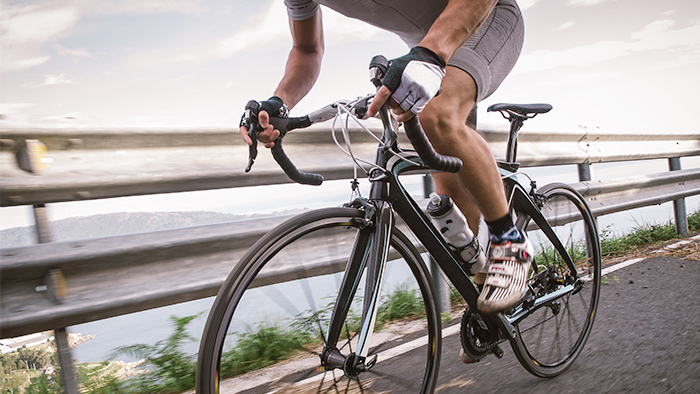


Training and conditioning for uphill cycling is essential to improve your climbing performance and build the necessary strength and endurance.
Here’s a detailed explanation of how to train effectively for uphill cycling:
Endurance Training:
Endurance is vital for uphill cycling as it allows you to sustain effort for extended periods. Include long, steady rides in your training, gradually increasing the duration and intensity.
Hill Repeats:
Incorporate hill repeats into your training routine. Find a challenging hill and ride up it at a high intensity, then recover on the descent. Repeat this several times to build strength and power.
Interval Training:
Intervals involve alternating between high-intensity efforts and recovery periods. This type of training improves your ability to push harder during uphill climbs.
Strength Training:
Focus on strengthening your leg muscles through exercises like squats, lunges, and leg presses. Stronger legs can generate more power and handle steeper climbs.
Core Exercises:
A strong core improves stability and balance during uphill cycling. Include planks, Russian twists, and other core exercises in your routine.
Climbing-Specific Workouts:
Mimic uphill conditions by training on a stationary bike with a high incline. This simulates the demands of climbing and allows you to target specific muscle groups.
Cross-Training:
Engage in other forms of aerobic exercise like running or swimming to supplement your cycling training. Cross-training helps prevent overuse injuries and keeps your workouts varied.
Rest and Recovery:
Adequate rest is crucial for allowing your muscles to recover and adapt to training. Plan rest days in your schedule and prioritize sleep for optimal recovery.
Gradual Progression:
Avoid overtraining by gradually increasing the intensity and duration of your workouts. This allows your body to adapt without risking injury or burnout.
Nutrition and Hydration:
Proper nutrition and hydration are vital for fueling your workouts and aiding recovery. Consume a balanced diet with sufficient carbohydrates, protein, and healthy fats.
Mental Preparation:
Uphill cycling requires mental strength and determination. Practice positive visualization and focus on your goals during challenging climbs.
Monitor Progress:
Keep track of your training and performance. Use a cycling app or a training journal to record your rides, monitor improvements, and set new goals.
Remember that consistent training and conditioning are key to becoming a better uphill cyclist.
Listen to your body, be patient, and stay motivated. With time and dedication, you’ll see significant improvements in your climbing abilities and overall cycling performance.
The Role of Bike Fit in Uphill Performance
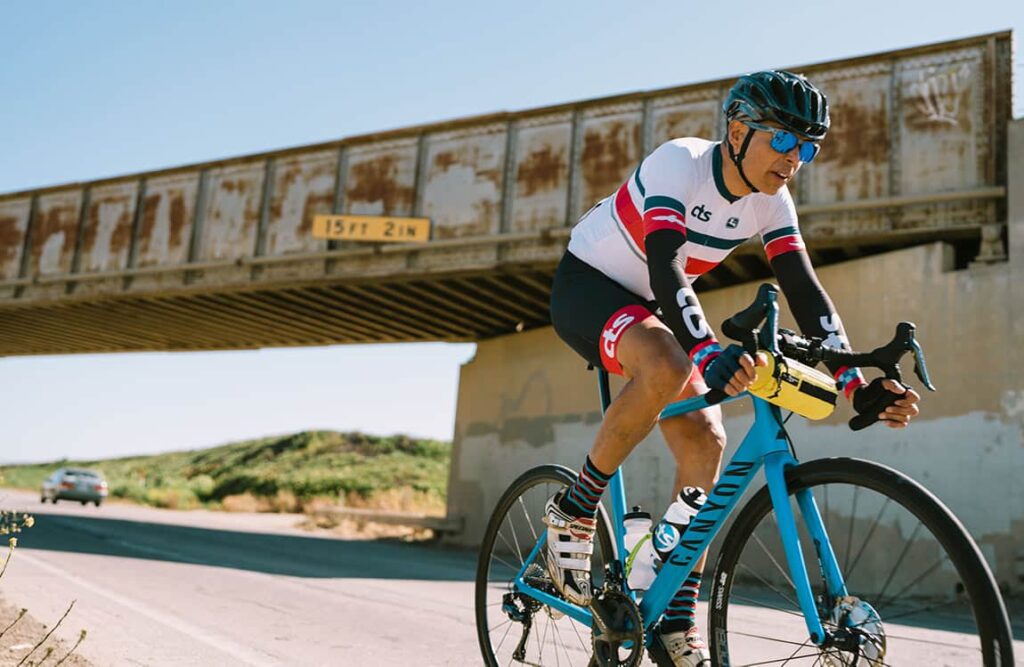


The role of bike fit in uphill performance is crucial, as it directly affects your efficiency, power transfer, and comfort during climbs.
A proper bike fit ensures that your body is optimally positioned on the bike, minimizing energy wastage and reducing the risk of discomfort or injury.
Here’s a detailed explanation of the significance of bike fit in uphill performance:
Power Transfer:
A well-fitted bike allows for efficient power transfer from your legs to the pedals. Proper alignment of the saddle, pedals, and handlebars ensures that your pedal strokes are smooth and effective, maximizing your power output during climbs.
Body Positioning:
Uphill climbs require a more upright and balanced position compared to flat terrain.
A proper bike fit will adjust the saddle height, handlebar reach, and tilt to provide a comfortable and balanced riding position, allowing you to generate more power and maintain control.
Comfort and Stability:
Climbing involves sustained effort and increased resistance, which can lead to fatigue. An appropriate bike fit reduces strain on your joints and muscles, enhancing comfort and stability during long and challenging climbs.
Reduced Risk of Injury:
Poor bike fit can lead to discomfort and even injuries, particularly in the knees, lower back, and neck. A professional bike fit helps prevent overuse injuries and ensures that your body is properly aligned to handle the stresses of climbing.
Breathing and Oxygen Intake:
An optimal bike fit also affects your breathing and oxygen intake during climbs. With the right body position, you can open up your chest and diaphragm for improved lung capacity and oxygen uptake, enhancing your endurance on the ascent.
Handling and Control:
Climbing requires precise handling and control, especially when navigating steep and technical terrain. Proper bike fit ensures that you can easily maneuver the bike and maintain control over technical sections, enhancing your confidence and performance.
Weight Distribution:
Uphill performance can be influenced by weight distribution on the bike. A bike fit that considers your weight distribution between the front and rear wheels helps maintain traction and stability on climbs.
Customization for Individual Needs:
Every cyclist is unique, and a personalized bike fit takes into account your individual anatomical measurements, flexibility, and riding style. This customization maximizes your uphill performance by addressing your specific strengths and limitations.
Confidence and Mental Focus:
A bike that fits you well boosts your confidence and mental focus during climbs. Knowing that your bike is optimized for your body and riding style allows you to concentrate on the task at hand without distractions.
To ensure a proper bike fit, consider seeking the expertise of a professional bike fitter.
They will assess your biomechanics, conduct physical measurements, and make necessary adjustments to your bike to enhance your uphill performance and overall riding experience.
Remember that an optimized bike fit is an investment in your comfort, performance, and long-term cycling enjoyment.
Troubleshooting Common Gear Issues During Climbs
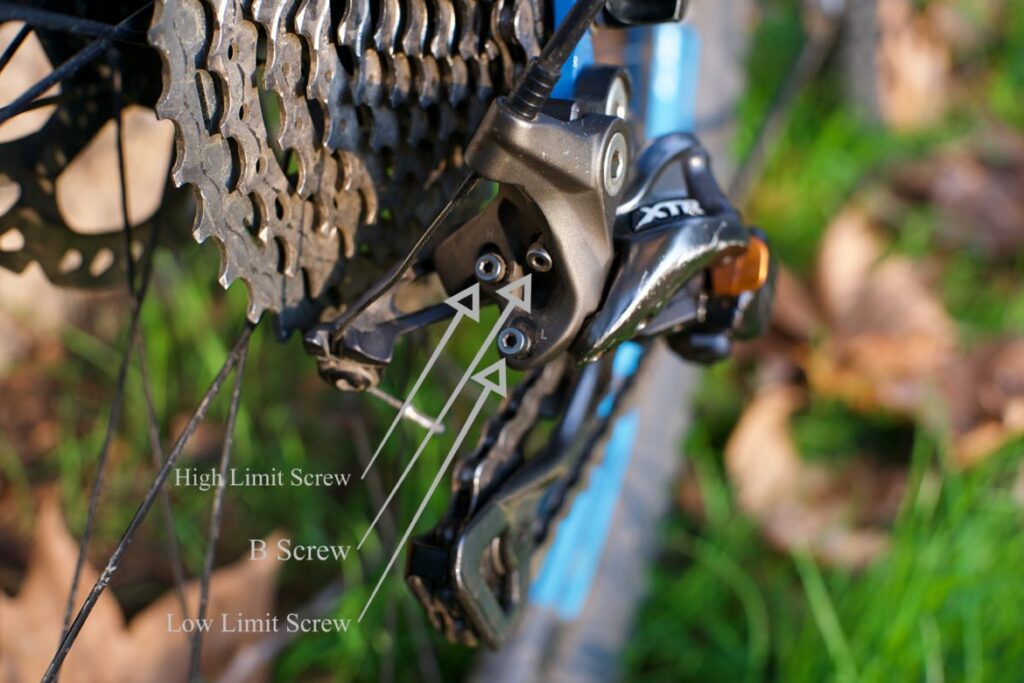


Troubleshooting common gear issues during climbs is essential for maintaining smooth and efficient uphill performance. Climbing requires precise gear selection to match the gradient and your energy level.
Here’s a detailed explanation of how to troubleshoot and address common gear issues during climbs:
Chain Skipping or Slipping:
If your chain skips or slips when climbing, it could be due to a worn chain or cassette. Check the chain and cassette for wear, and replace them if necessary. Additionally, ensure proper tension in the derailleur and that it is aligned correctly.
Difficulty Shifting Gears:
Difficulty shifting can be caused by cable tension problems. Check the gear cable for fraying or signs of wear. Adjust the cable tension using the barrel adjuster on the derailleur to ensure smooth and precise gear changes.
Chain Rubbing:
If you experience chain rubbing against the front derailleur or chainrings, it might be due to misalignment or cable tension issues. Make sure the front derailleur is properly adjusted and aligned, and adjust the cable tension if needed.
Wrong Gear Ratios:
Incorrect gear ratios can make climbing more challenging than necessary. If you find yourself struggling in too high or too low gear, consider adjusting your cassette or chainrings to provide more suitable options for climbing.
Chain Dropping:
A chain dropping off the chainring during climbs can be dangerous. Check the chainring for wear and replace it if necessary. You can also use a chain guide or clutch derailleur to prevent chain drops.
Derailleur Misalignment:
A misaligned rear derailleur can lead to poor shifting and may cause the chain to fall off the cassette. Ensure the rear derailleur hanger is straight, and adjust the derailleur alignment if needed.
Excessive Chain Noise:
If your chain is making excessive noise, it may need lubrication or cleaning. A clean and well-lubricated chain runs smoother, reducing friction and noise during climbs.
Cable Housing Issues:
Damaged or frayed cable housing can lead to poor gear shifting. Check the cable housing for any signs of wear and replace it if necessary.
Chain Length:
Incorrect chain length can affect the performance of your gears. Ensure your chain is the right length for your specific drivetrain setup to avoid issues during climbs.
Regular maintenance and bike checks before climbs can help identify and address potential gear issues. It’s essential to keep your drivetrain clean and well-lubricated to ensure smooth gear transitions.
If you encounter persistent gear problems, consider seeking the assistance of a professional bike mechanic to diagnose and resolve the issues effectively. A well-tuned gear system is key to a successful and enjoyable climbing experience.
Enhancing Climbing Abilities with Proper Nutrition
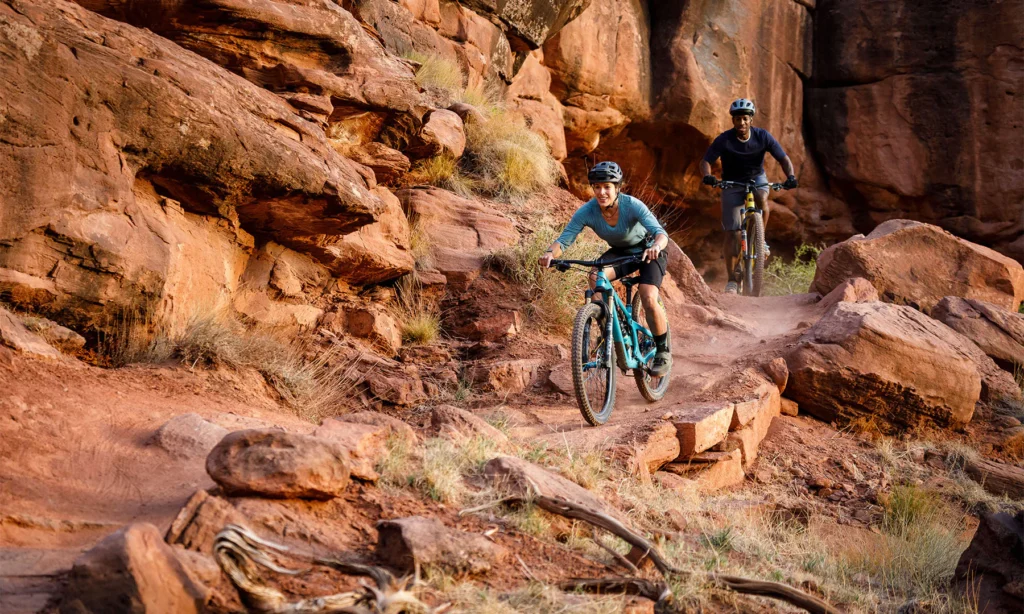


Enhancing climbing abilities with proper nutrition is crucial for optimizing performance and endurance during uphill rides. Climbing requires sustained effort and energy expenditure, making nutrition a critical aspect to consider.
Here’s a detailed explanation of how to use proper nutrition to enhance climbing abilities:
Carbohydrates for Energy:
Carbohydrates are the primary source of fuel for endurance activities like climbing.
Consuming complex carbohydrates, such as whole grains, fruits, and vegetables, provides a steady release of energy, sustaining you through long climbs. Aim to consume a carbohydrate-rich meal a few hours before your ride.
Hydration is Key:
Staying hydrated is vital for optimal performance. Dehydration can lead to decreased energy levels and impaired muscle function. Drink water regularly before, during, and after your climb to maintain proper hydration.
Electrolyte Balance:
Electrolytes, such as sodium, potassium, and magnesium, are essential for maintaining fluid balance and muscle function. Consider consuming electrolyte-rich beverages or adding electrolyte supplements to your water during longer climbs or hot weather conditions.
Protein for Muscle Repair:
Protein is essential for muscle repair and recovery. Consuming a protein-rich meal or snack after your climb helps repair muscle tissues and aids in recovery.
Healthy Fats for Endurance:
Including healthy fats, such as avocados, nuts, and olive oil, in your pre-ride meal can provide a source of sustained energy for endurance efforts.
Pre-Ride Snack:
Eating a small, easily digestible snack before your climb can provide an extra boost of energy without feeling heavy. Consider options like a banana, energy bar, or yogurt.
During-Ride Nutrition:
For longer climbs, bring along energy gels, energy bars, or sports drinks to replenish energy and maintain blood glucose levels. Consuming easily digestible carbohydrates during the ride can help sustain energy levels.
Post-Ride Recovery Meal:
After the climb, refuel with a balanced meal that includes carbohydrates, protein, and healthy fats to support muscle recovery and replenish glycogen stores.
Avoid Overeating:
While it’s important to fuel your body properly, avoid overeating before or during the climb, as this can lead to discomfort and hinder performance.
Personalize Your Nutrition:
Everyone’s nutritional needs are different. Experiment with different foods and timing to find what works best for you. Consider consulting a sports nutritionist for personalized guidance.
Remember to listen to your body and adjust your nutrition strategy accordingly. Proper nutrition not only enhances climbing abilities but also promotes overall health and well-being, enabling you to enjoy your rides to the fullest.
Conclusion
Choosing the right bike gear for uphill climbs is essential for optimizing your performance and conquering challenging terrains.
A combination of the right gear ratio, effective shifting techniques, proper bike fit, and adequate training can significantly enhance your uphill cycling abilities.
Additionally, fueling your body with the right nutrition before, during, and after the climb can further support your endurance and energy levels.
By understanding the different types of bike gears and employing the tips provided, you’ll be better equipped to tackle uphill rides with confidence and ease.
Happy cycling!
FAQ’s
What gears should I use uphill?
Use a low gear for uphill climbs. This helps maintain a steady cadence and reduces strain on your legs. Aim for a gear that allows you to pedal comfortably without exerting too much effort.
Is gear 1 high or low on a bike?
Gear 1 is the lowest gear on a bike, providing the easiest pedaling and the least resistance. It is used for climbing steep hills or riding at a slow pace.
Is bike gear 1 for uphill?
Yes, bike gear 1 is typically used for uphill climbs. It provides the lowest gear ratio, making it easier to pedal uphill with less effort.
What gear is easiest on uphill?
The gear that is easiest on uphill is the lowest gear, typically gear 1 on most bikes. This provides the highest mechanical advantage for climbing steep inclines with less effort.
Which gear for downhill?
For downhill, it is best to use a higher gear to maintain control and prevent pedaling too quickly. Use a gear that allows smooth, controlled descents without excessive speed.



Welcome to Bikegenics, where passion meets performance! We are a leading online destination for all things related to mountain biking, dedicated to providing you with top-notch gear, expert advice, and an immersive community to fuel your two-wheeled adventures. With a commitment to excellence and a deep love for the sport, we strive to elevate your biking experience to new heights.
